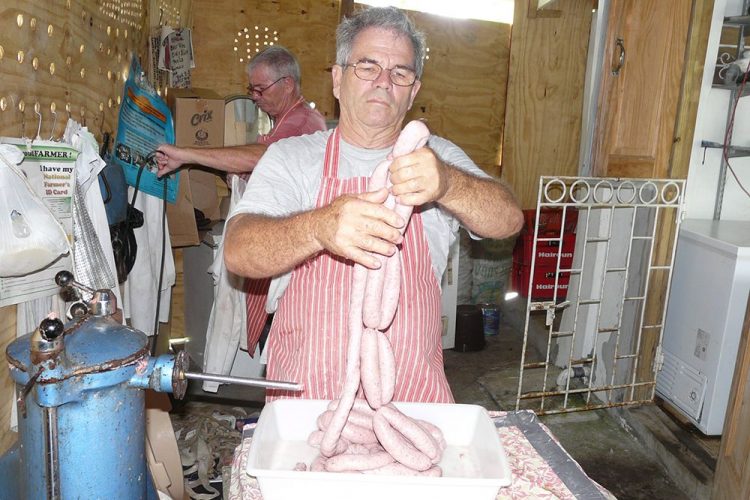SVG needs to lift standard of meat industry – Richard Gibson

One of the few professional butchers in St Vincent and the Grenadines (SVG) strongly believes that the only way to cut this countryâs annual meat import bill of $47 million is to lift the standard of the meat industry.
But Richard Gibson, who, with his brother Joe, operates Midway Butchers, a meat shop at Grand Gate, Lowmans, says after 10 years of trying to get a solid foundation for the meat industry in SVG, there seems to be no willingness, either from Government or the other practitioners, to improve on it.
âThe meat cutters are stuck in their ways,â Gibson said frankly, explaining that as far as he is aware, he and his brother Joe are the only two professionally trained butchers in the country.
He said with the opening of the Argyle International Airport, SVG is looking to raise the standard of its tourism product, which includes the quality of meat served at restaurants and hotels.
âBut we are importing more and more meat to feed the visitors, while our livestock farmers are struggling to sell their stock. We are exporting 1,000 cattle a year to Grenada, but we are importing the equivalent of over 3,000 heads of cattle in primal cuts per year.â
Between 2013 and 2016, SVG imported meat and meat preparations with a total value of $187 million. In 2013, meat imports were valued at $47,812,994, while in 2014, 2015 and 2016, meat valued at $48,494,204, $46,473,699 and $44.551,237 respectively was imported.
During the same period, this country exported livestock valued at $190,500, $219,175, $182,773 and $185,897 from 2013 to 2016 respectively.
Gibson says our meat import bill is as high as it is because of deficiencies in the local meat industry.
âThe farmers are not producing the right quality animals and the meat cutters donât know how to look after the meat. They are selling sub-standard meat for top quality; they donât age the meat, donât take care of the way they slaughter the animals and donât know how to cut the primal cuts we need.â
A primal cut of meat is a piece of meat initially separated from the carcass of an animal during butchering. Examples of primals include the beef round, loin, rib, and chuck or the swine ham, loin, Boston butt, and picnic.
Gibson, who was trained at the highest levels in the United Kingdom, is willing to pass on his expertise, and has suggested the Youth Empowerment Service (YES) or Supportive Education and Training (SET) programmes as avenues through which this could be done.
âThere is the YES and SET programme, etc. I was hoping that the Government might let me train at least two,â he offered.
He is open to dialogue with the appropriate Government officials about setting up a mechanism, so that professional standards in the meat industry can be instilled in the younger generation.











